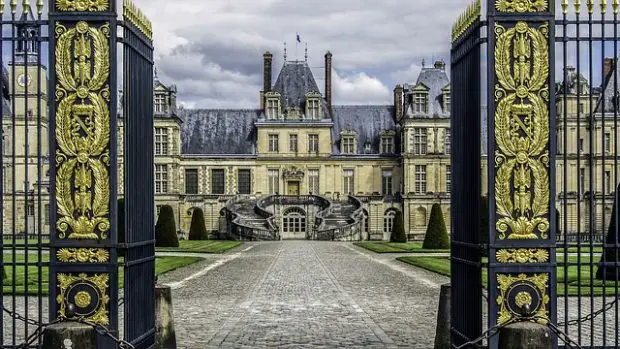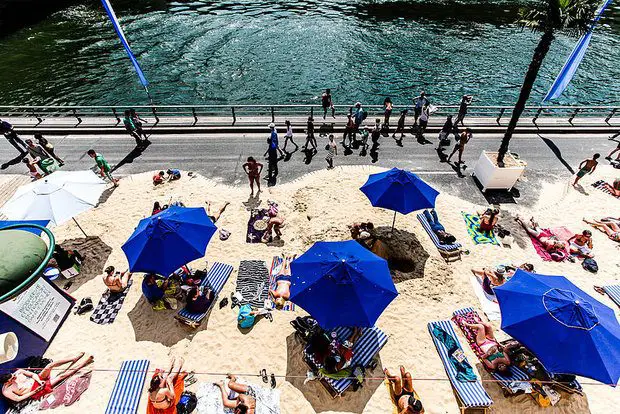Imagine strolling under an elegant glass roof, surrounded by unique shops and the history of Paris. The covered passages of Paris, built in the 19th century, are hidden treasures where time seems to have stood still. From high-end gastronomy to artisan boutiques, these passages offer an authentic Parisian experience, away from the hustle and bustle of the streets.
1) Passage des Panoramas
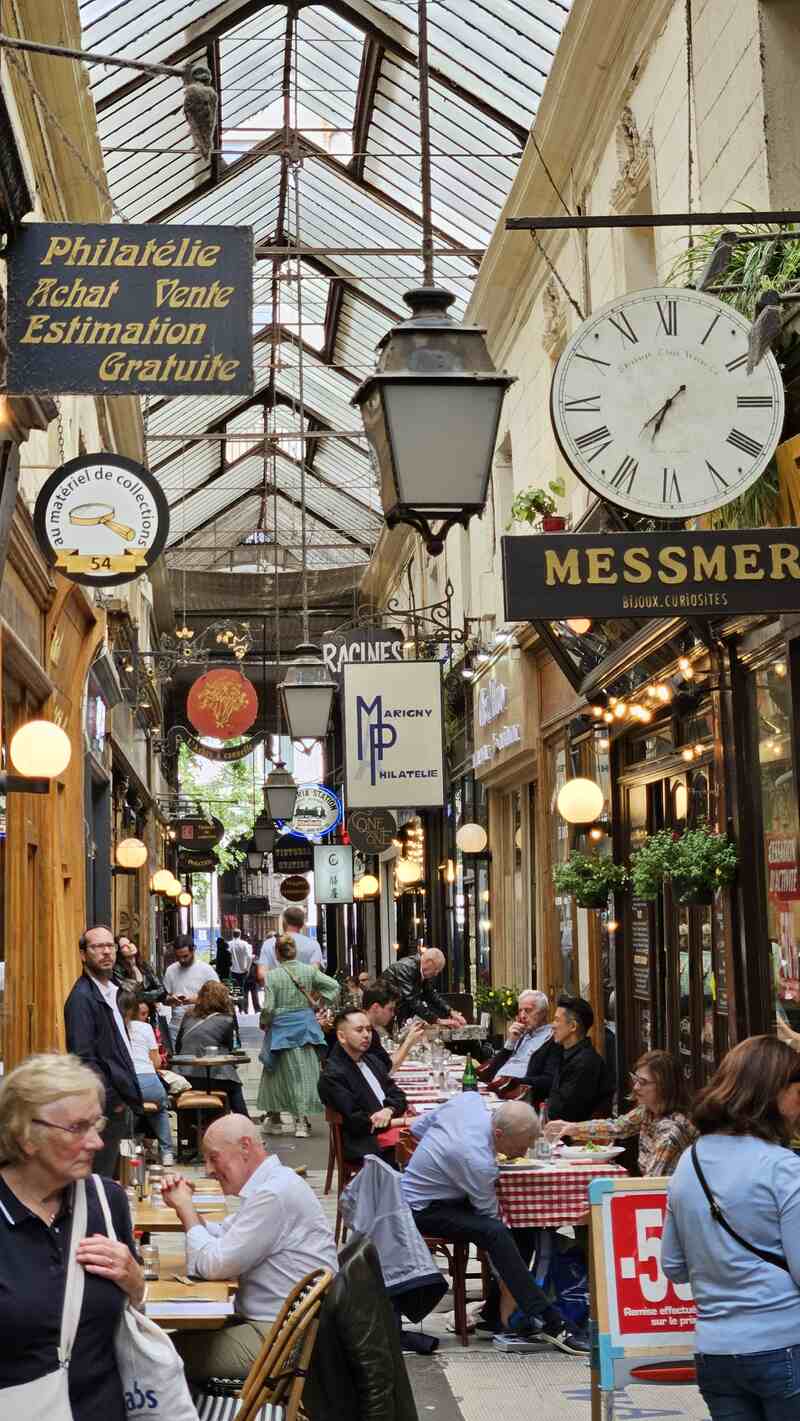
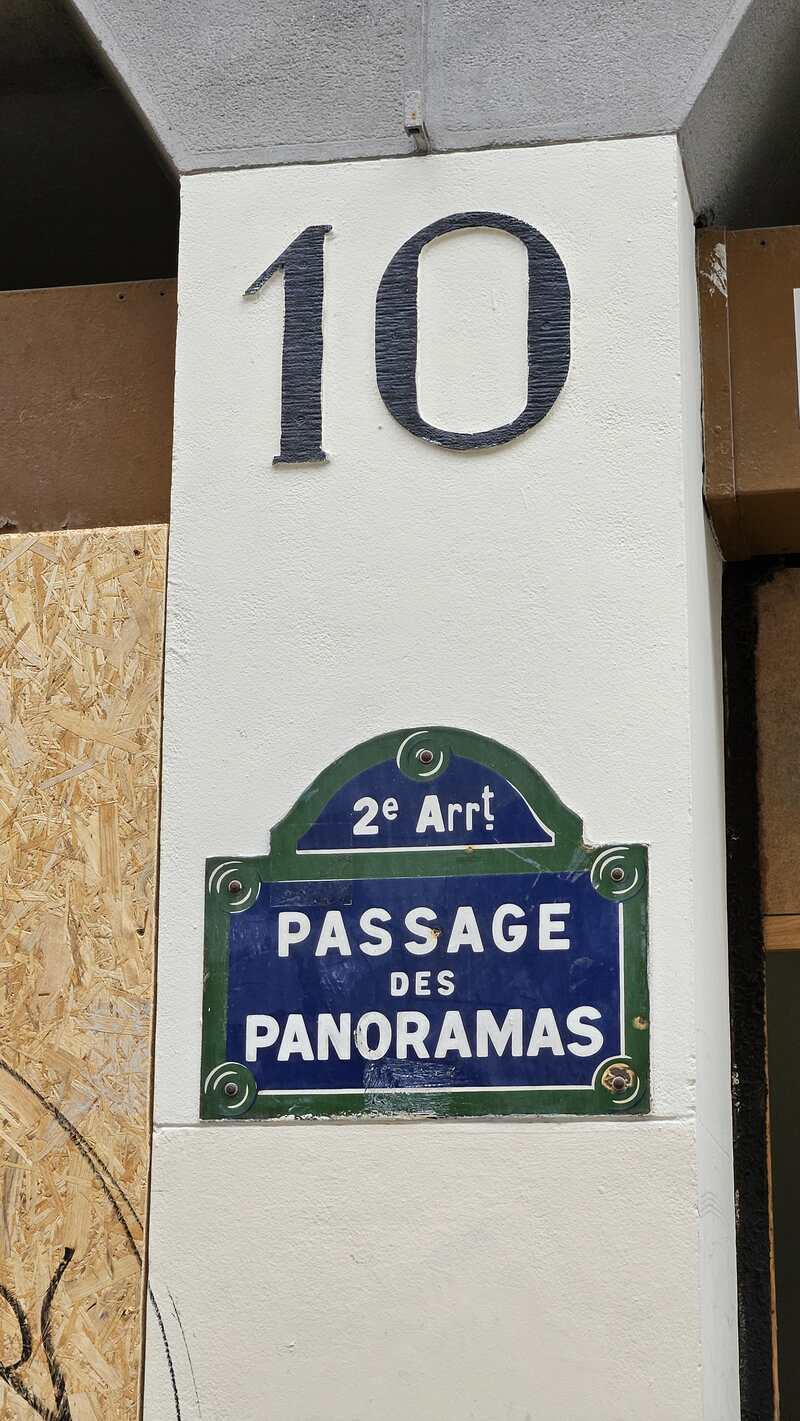
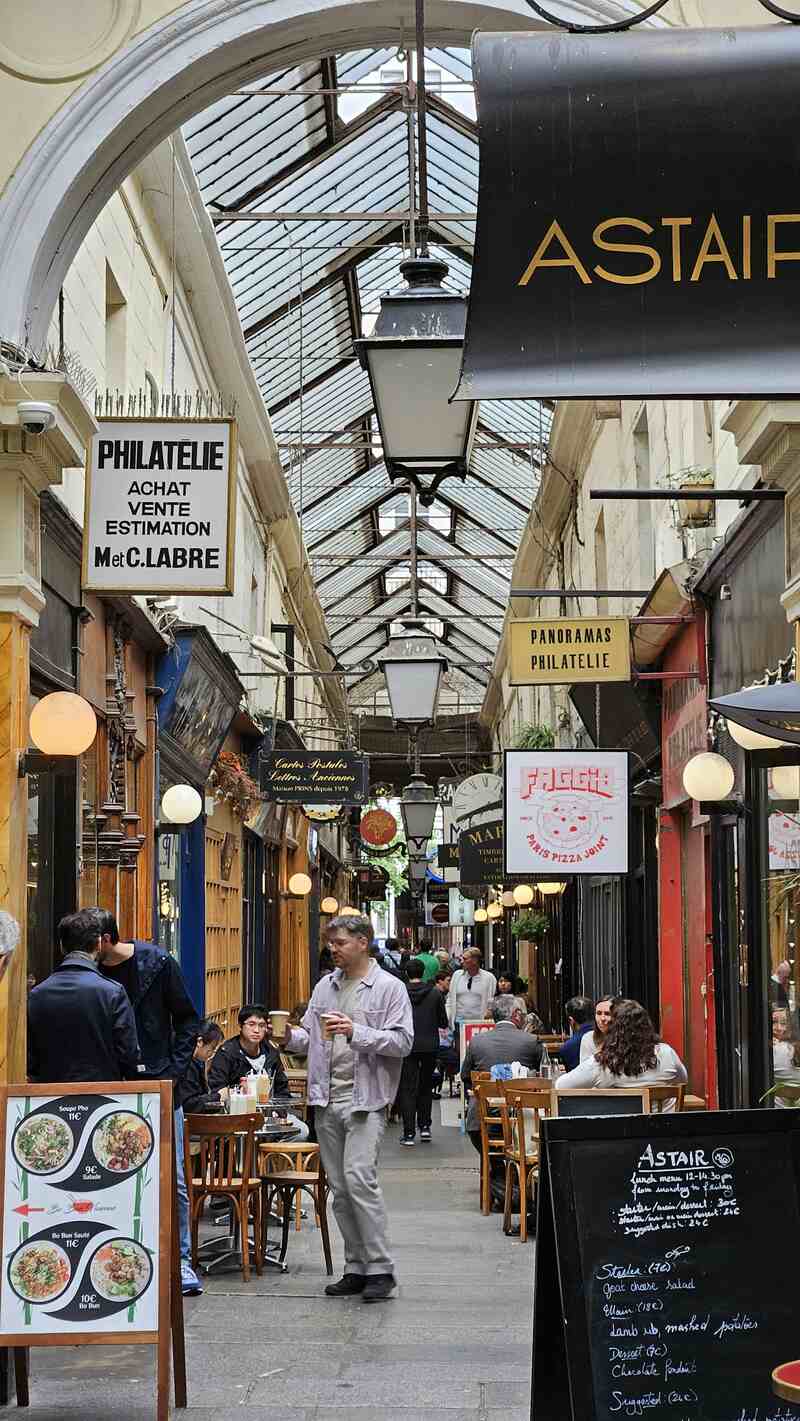
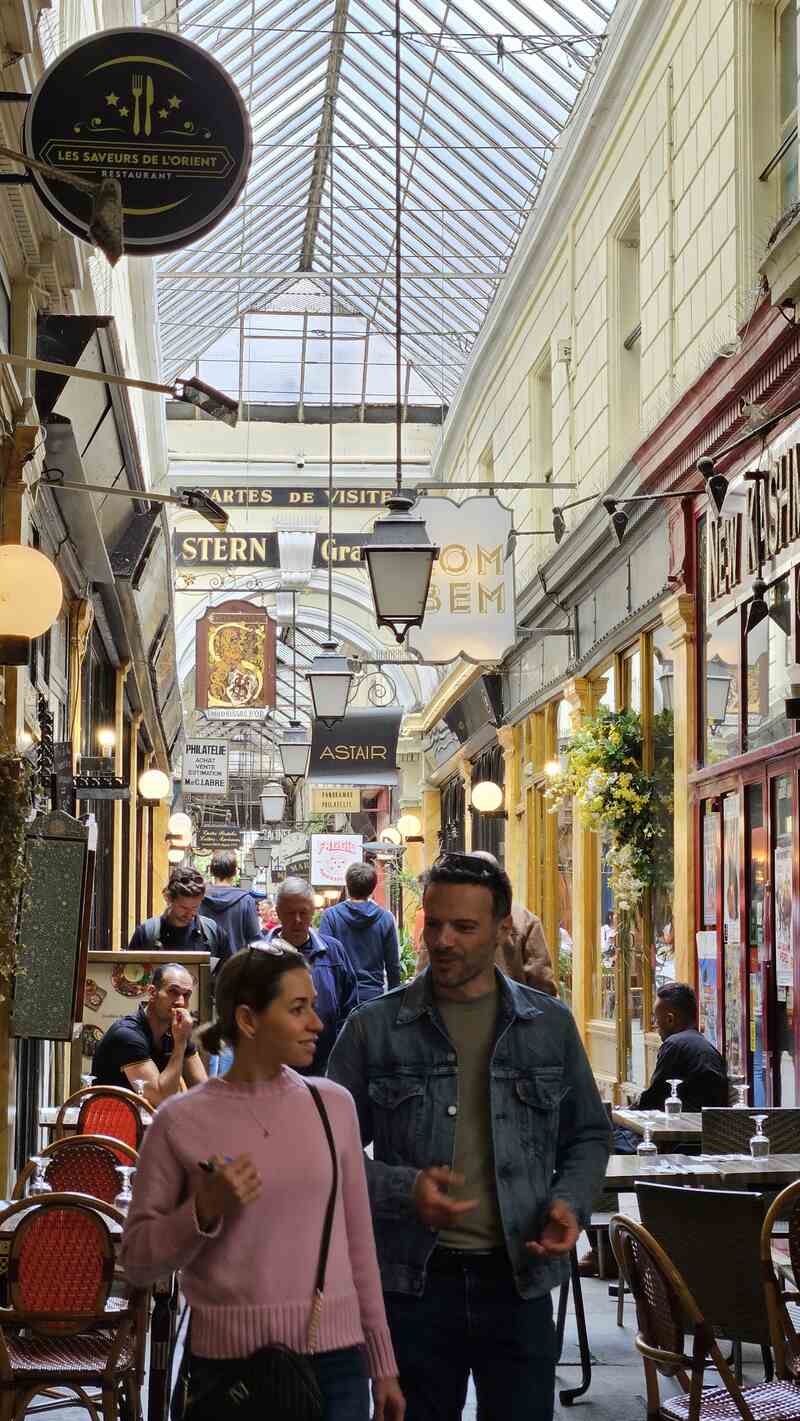
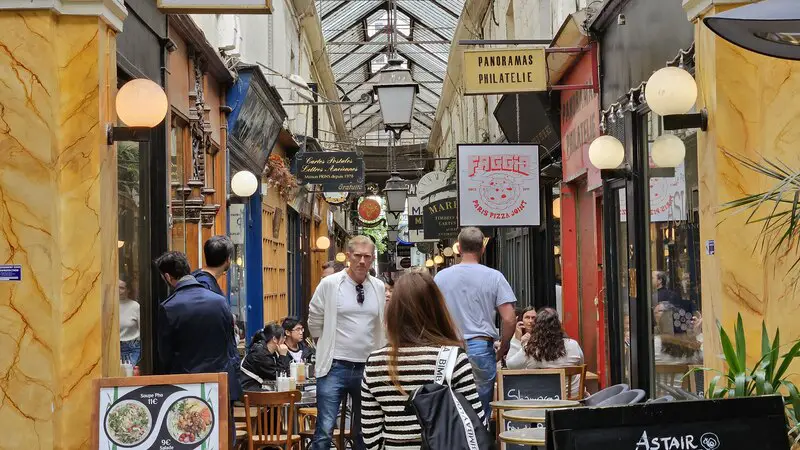
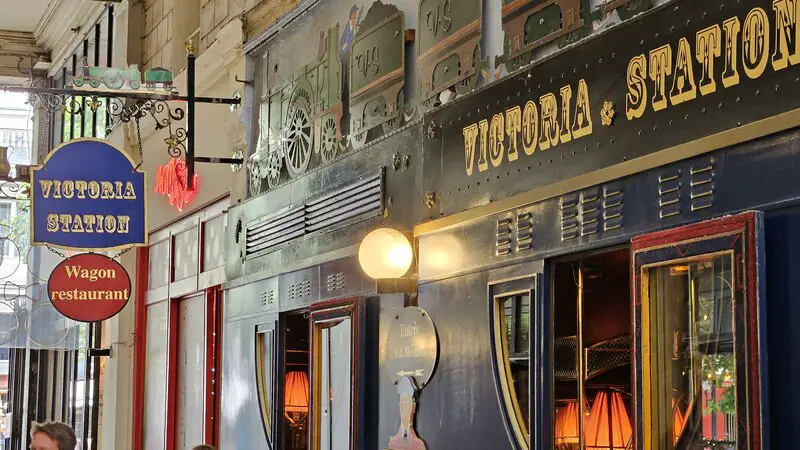
The Passage des Panoramas was opened in 1799, which makes it the oldest covered passage in Europe. It was also the first to test gas lights – making it the ancestor of modern shopping malls.
It was classified as a historic monument in 1974 and you can still contemplate the facades of the old chocolate factory Marquis and the shop of the famous engraver, Stern – whose workshop has been turned into a coffee shop. The passage is a temple dedicated to food.
There’s something to satisfy all appetites and budgets. From the Italian cuisine of Racines to all kinds of dumplings at Gyoza Bar, to the French bistro recipes of Astair, there are more than a dozen restaurants and bistros that inhabit the place.
The passage is also known for hosting the Théâtre des Variétés* – which has been giving life to its corridors for more the two hundred years – and for having Emile Zola falling for it to the point of incorporating the passage in its book “Nana”.
Entrance: 11 boulevard Montmartre, 75002, Paris
Opening hours: Monday to Sunday, from 6am to 12pm
2) Passage Choiseul

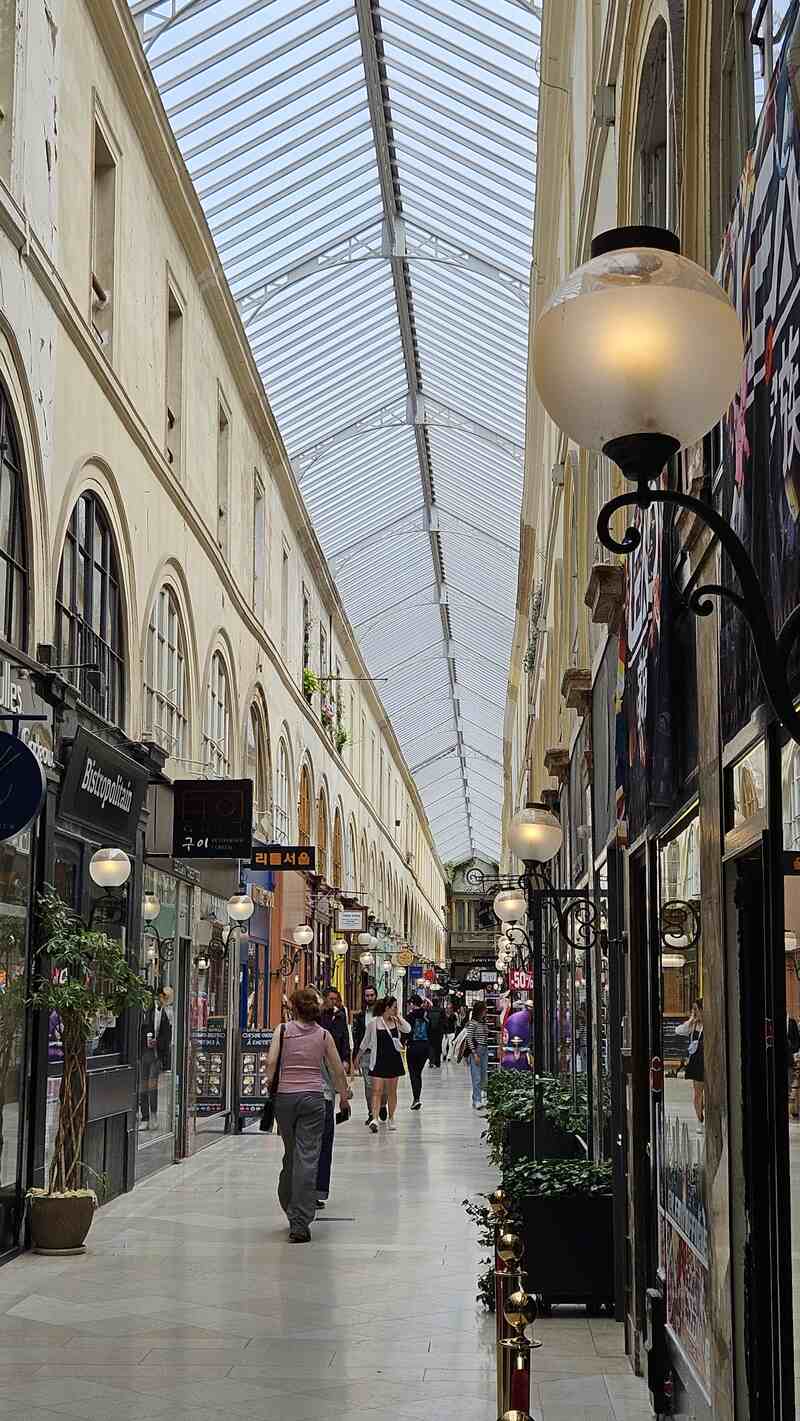
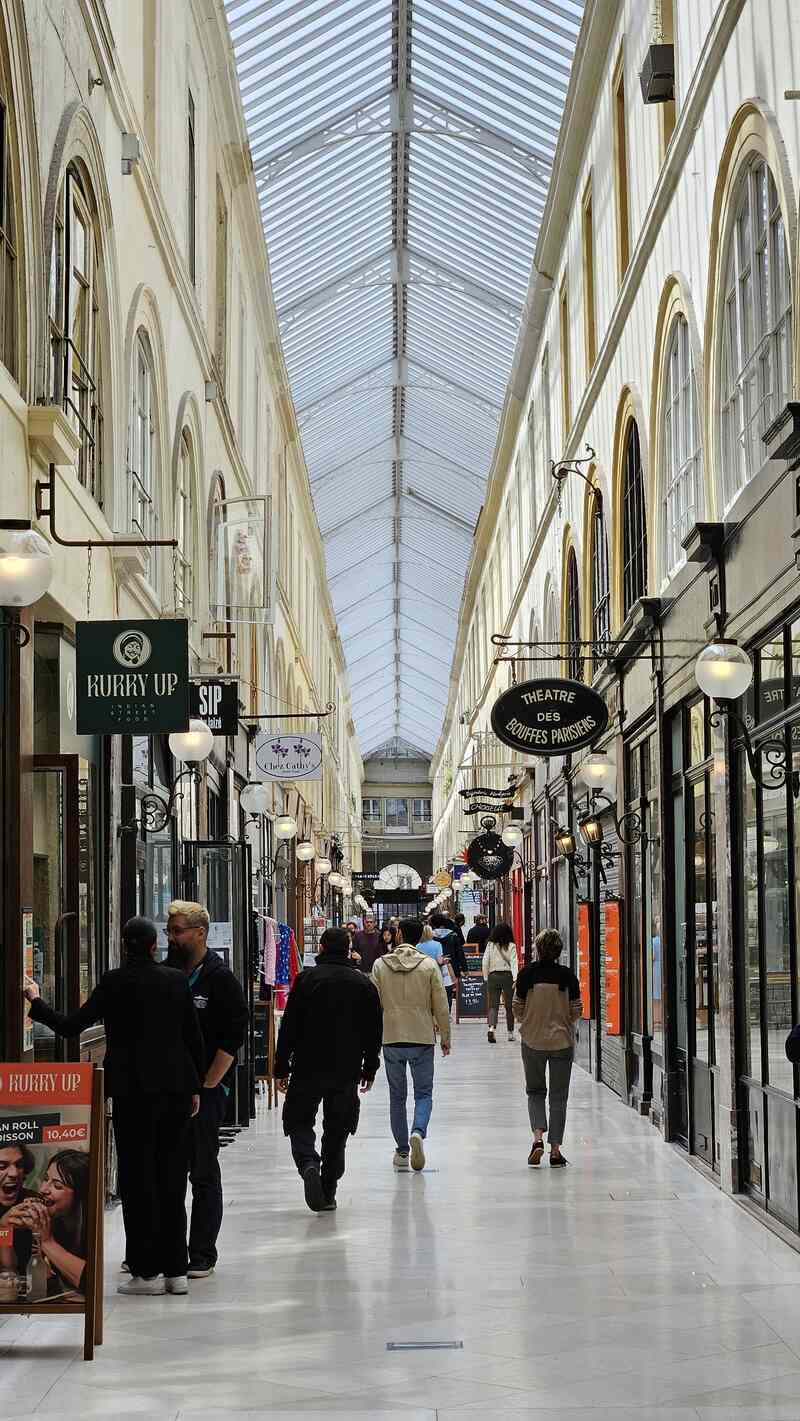
The Passage Choiseul opened in 1827 and is more than 600 feet long, making it the longest of the capital.
You can find different shops at the lower level and the mezzanine, whereas the 1st and 2nd floors are mostly residential.
The beautiful glass roof standing over the passage was replaced in 1907 and restored in 2012 – along with the rest of the gallery, which had been closed for renovation for years.
The passage was classified as a historic monument in 1974 for its interior facades – which are still visible – and some part of its roofing.
You can enjoy some delicious Korean dishes at the L’Othentique Vietnam restaurant – prices are reasonable and the employees are friendly – before getting a massage (or even sleep) in one of the high-tech zero-gravity seats of the Zen Bar.
Entrance: 40 rue des Petits Champs, 75002, Paris
Opening hours: Monday to Saturday, 8am to 8pm
3) Galerie Vivienne
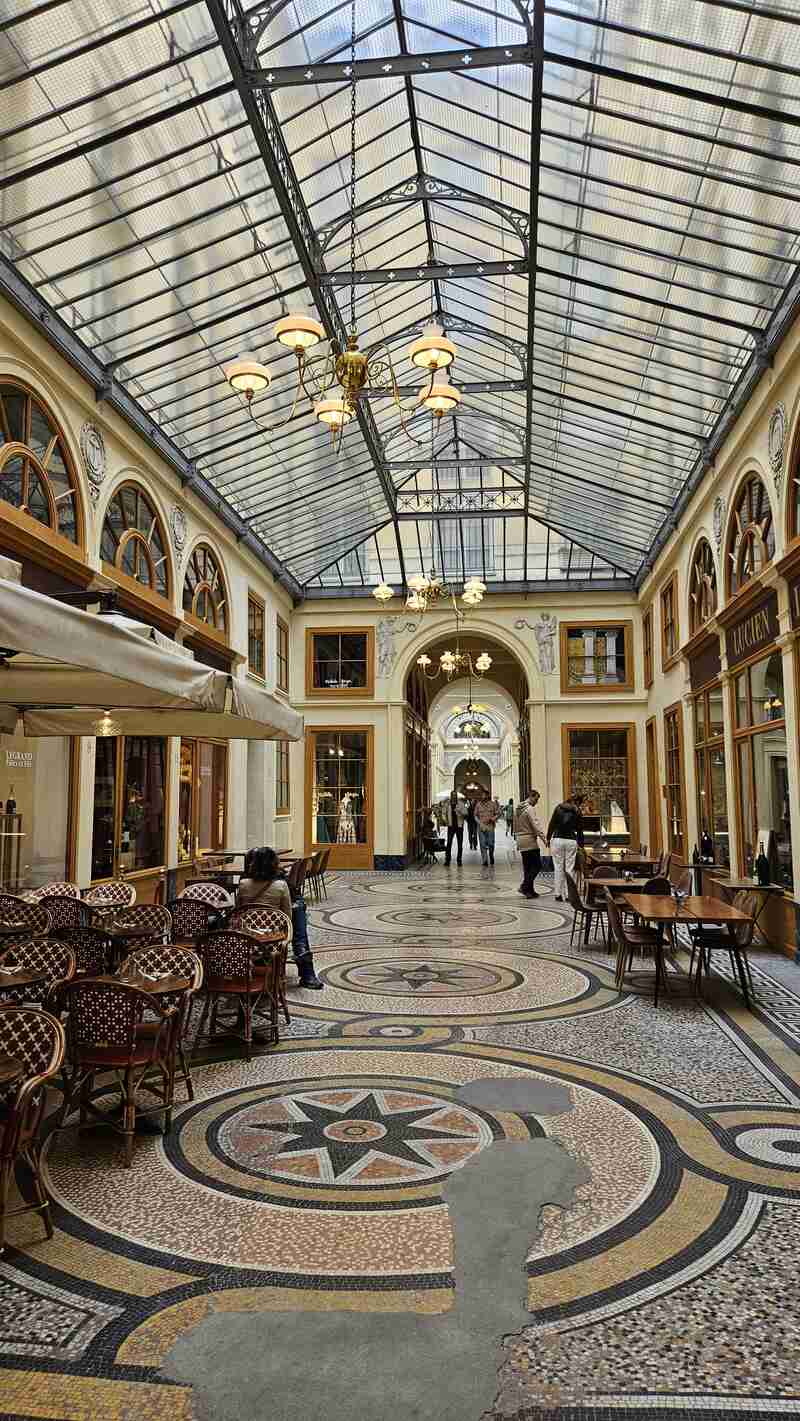
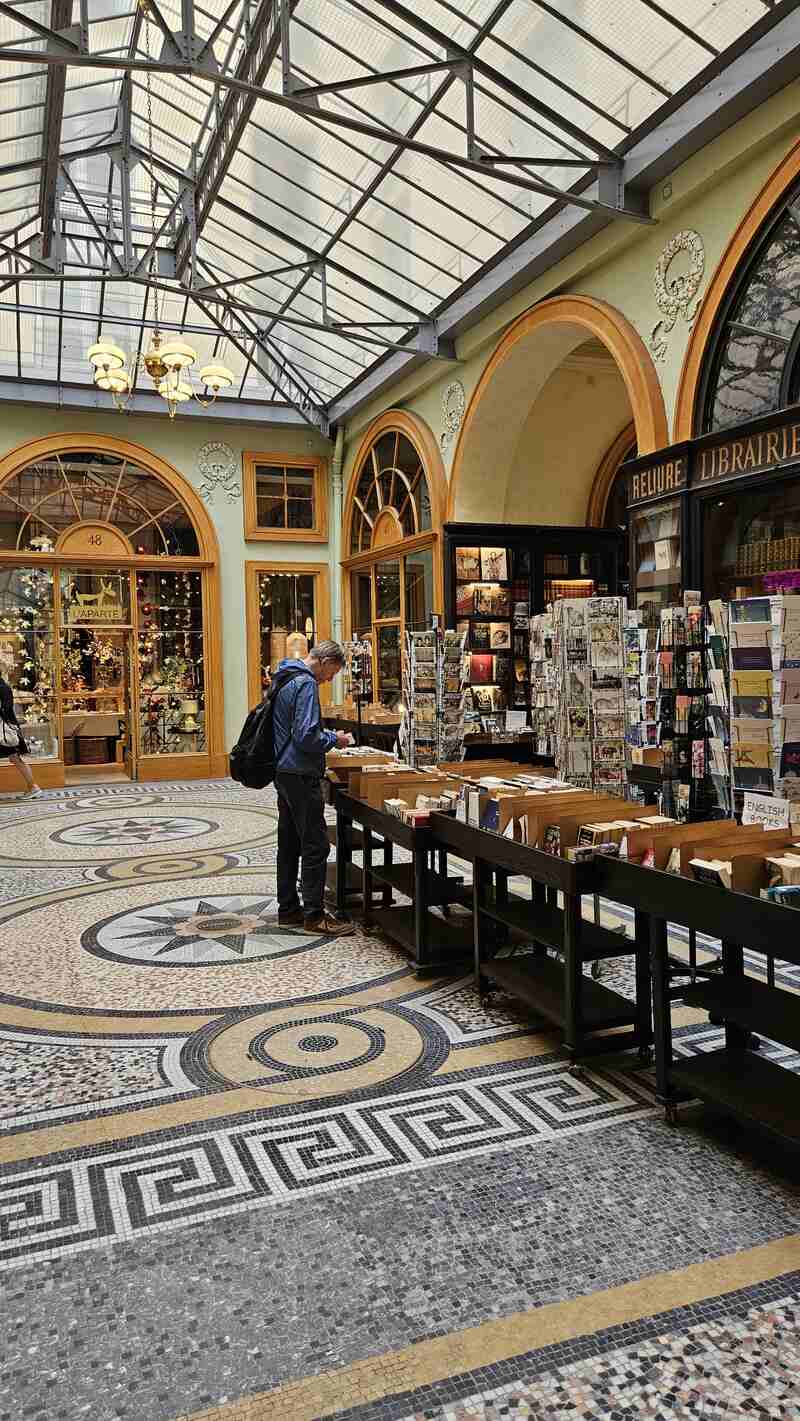
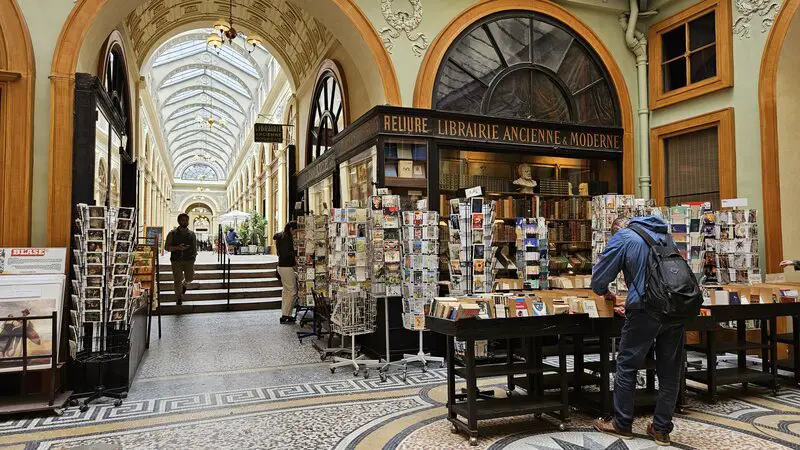
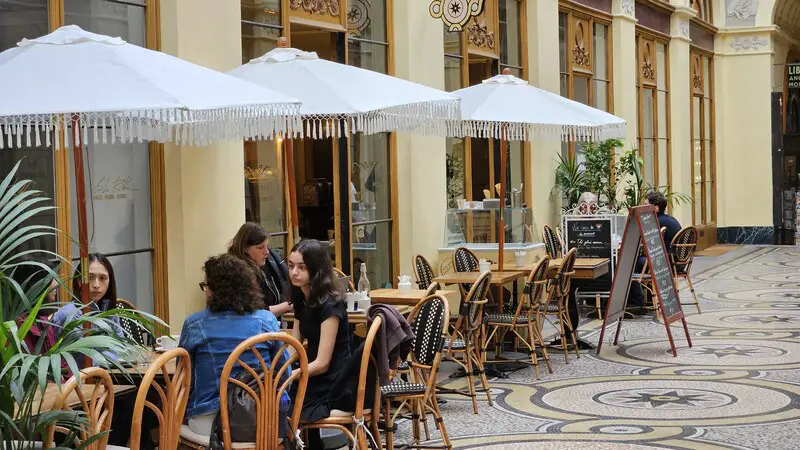
Built in 1823 behind the Richelieu library, and at a short walking distance from the Palais-Royal, the geographical location of the Galerie Vivienne soon made it one of the must-see places in Paris.
Despite a drop in the number of visitors by the end of the Second Empire – as for every other covered passage – it has never fallen into oblivion and it even gained a renewed interest from the public in the 80s when it welcomed Jean-Paul Gaultier’s very first workshop. Even though he moved in 2014, the Vivienne Gallery has managed to be sustainable. The caduceuses, anchors, horns of plenty, goddesses and nymphs adorning the rotunda were restored in 2016.
Its neoclassical Pompeian style, colorful mosaics and high glass roof turned it into an iconic Parisian place.
It is the home of many fashion and designer stores, librairies, coffee shops and restaurants.
You can dine at Bistrot Vivienne, which only serves homemade dishes with fresh and seasonal products, or enjoy a glass of wine at Legrand Filles et Fils, an establishment renowned for its wine selection and exceptional service.
Entrance: 5 rue de la Banque, 75002, Paris
Opening hours: Monday to Sunday, 8:30 am to 8:30 pm
4) Passage Jouffroy
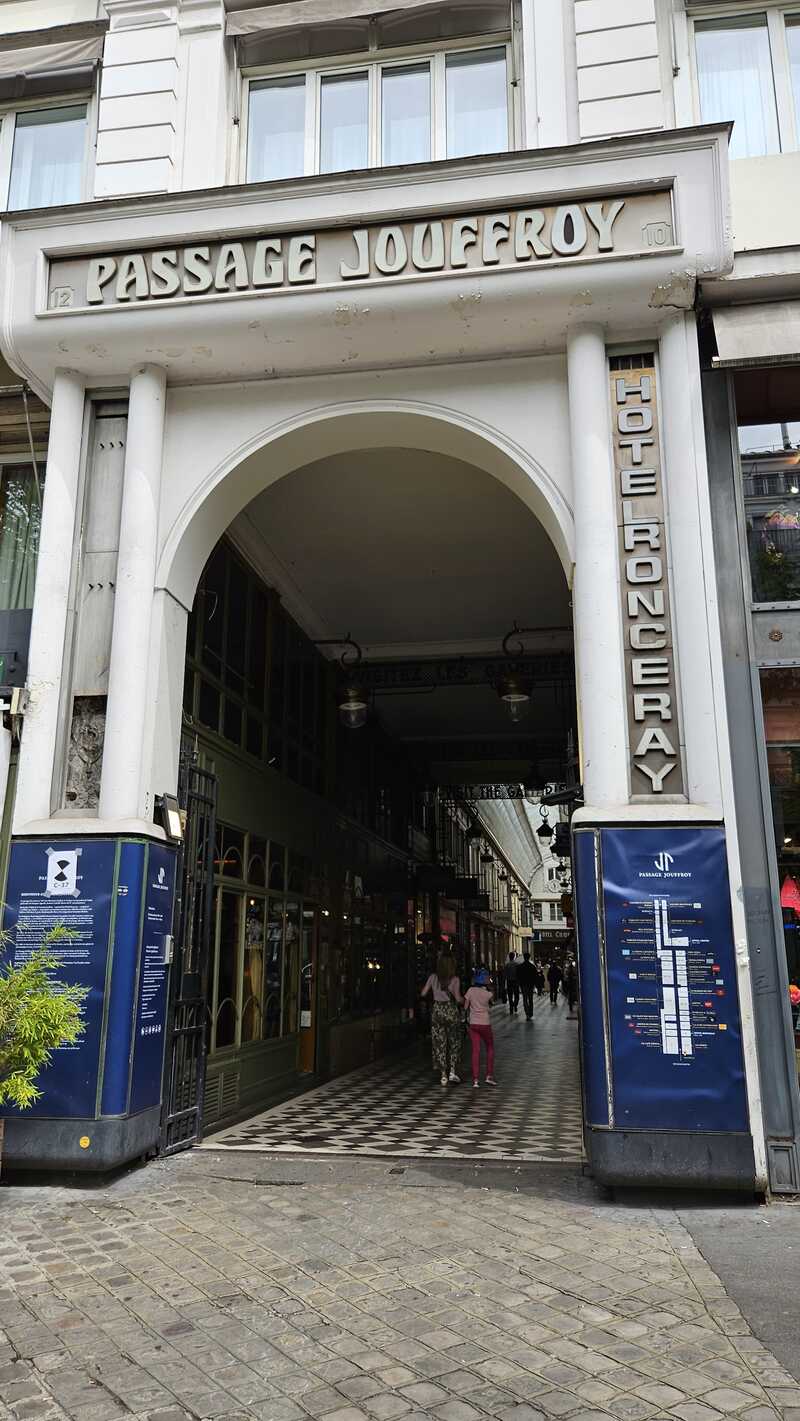
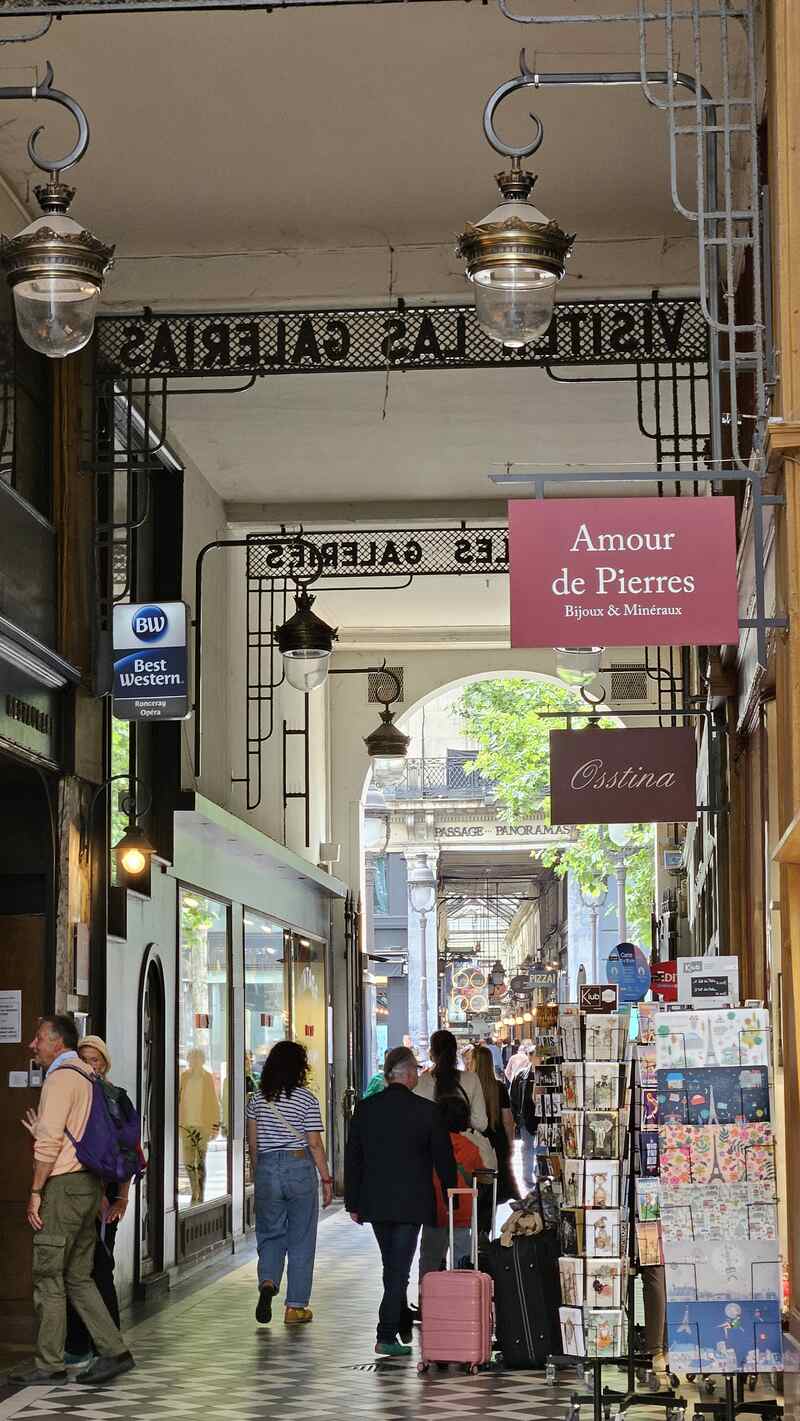
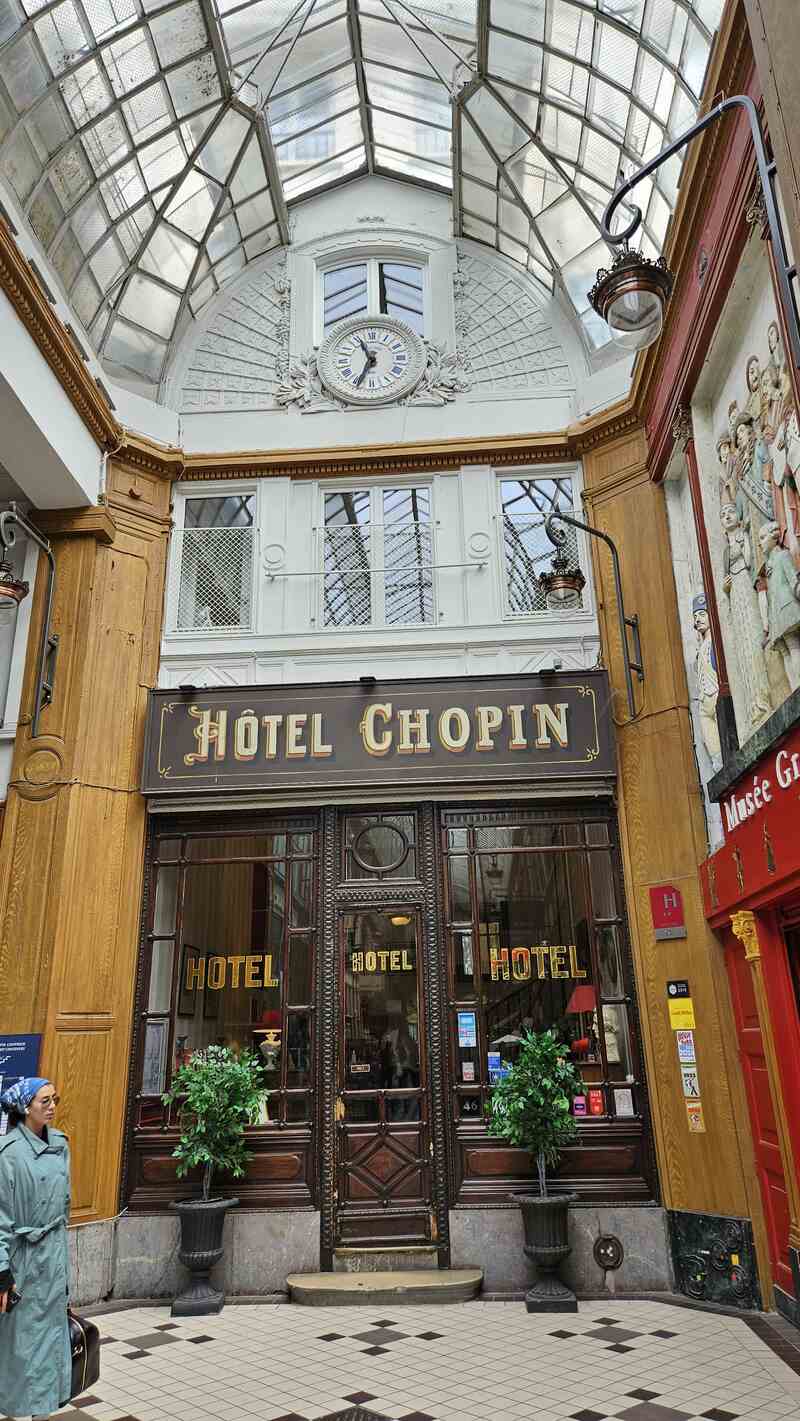
Created in 1845 to extend the Passage des Panoramas, the Passage Jouffroy was the first to be entirely made of glass and metal. Only its ornaments are made of wood.
It was also the first covered passage to be heated from the floor. Its marble paving deceives the eye and gives an impression of depth, enhanced by the arched glass roof.
The passage was classified as a historic monument in 1974.
It gained fame around 1880 when Arthur Meyer and Alfred Grévin decided to create a gallery of characters made out of wax in one of the buildings. Some of the statues were put in the passage and it became the exit of the famous Grévin museum. To this day it has allowed the sustainability of the passage.
While wandering between the libraries and the canes shop you can buy sweets at La Cure Gourmande candy store, have a cup of tea at the famous Valentin tea room and perhaps discover Pain d’Epice, a charming toy store, if you fall under the spell of this magical place..
Entrance: 10-12 Boulevard Montmartre, 75009, Paris
Opening hours: Monday to Sunday, 7 am to 9:30 pm
5) Galerie Véro-Dodat


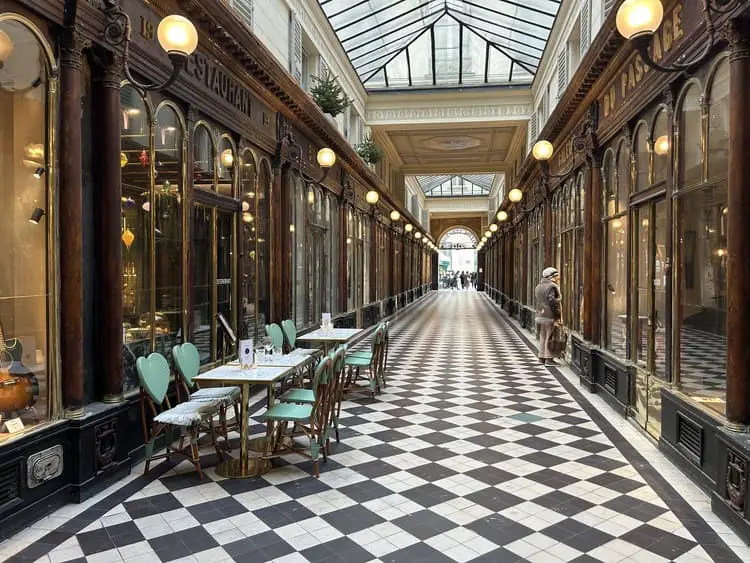


Built in 1826 to join the Palais-Royal to the Halles, the Galerie Véro-Dodat boomed quickly thanks mostly to the Messageries Laffitte et Caillard business. People wandered inside the gallery and its fashion boutiques while waiting for their coach.
It is now one of the most discreet galleries in Paris but its neoclassical style, its elegant glass roof and the woodwork on its facade keep it from going unnoticed.
If you look up when you come to the gallery through the rue du Bouloi entrance, you can see two original statues: one of Hermes with its winged helmet and the other of a resting satyr.
There are jewelry stores, art galleries, and different restaurants in it but it is for the Christian Louboutin workshop boutique that the Véro-Dodat gallery is mostly known. You can have a drink at the Café de l’Epoque and a bite at the Véro-Dodat which is famous for its traditional cooking.
Entrance: 19 rue Jean-Jacques Rousseau, 75001, Paris
Opening hours: Monday to Saturday, 7am to 10pm
6) Passage Verdeau
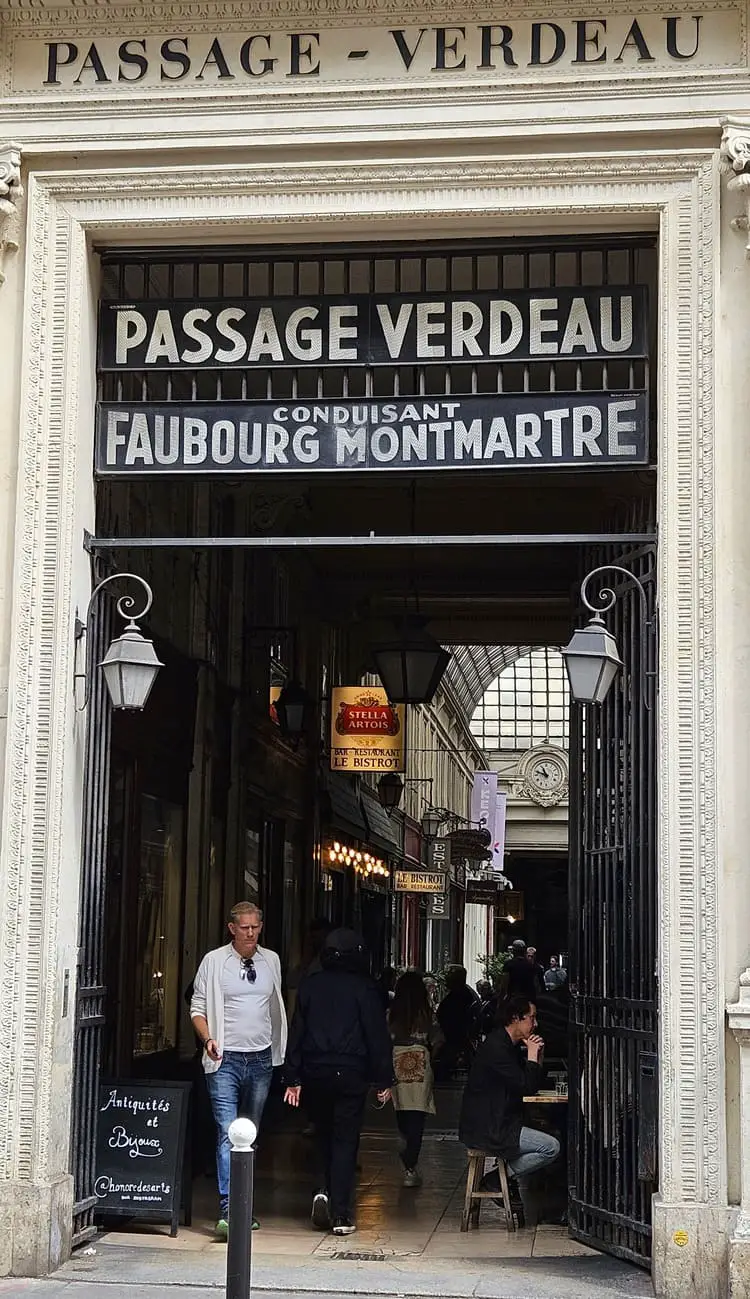
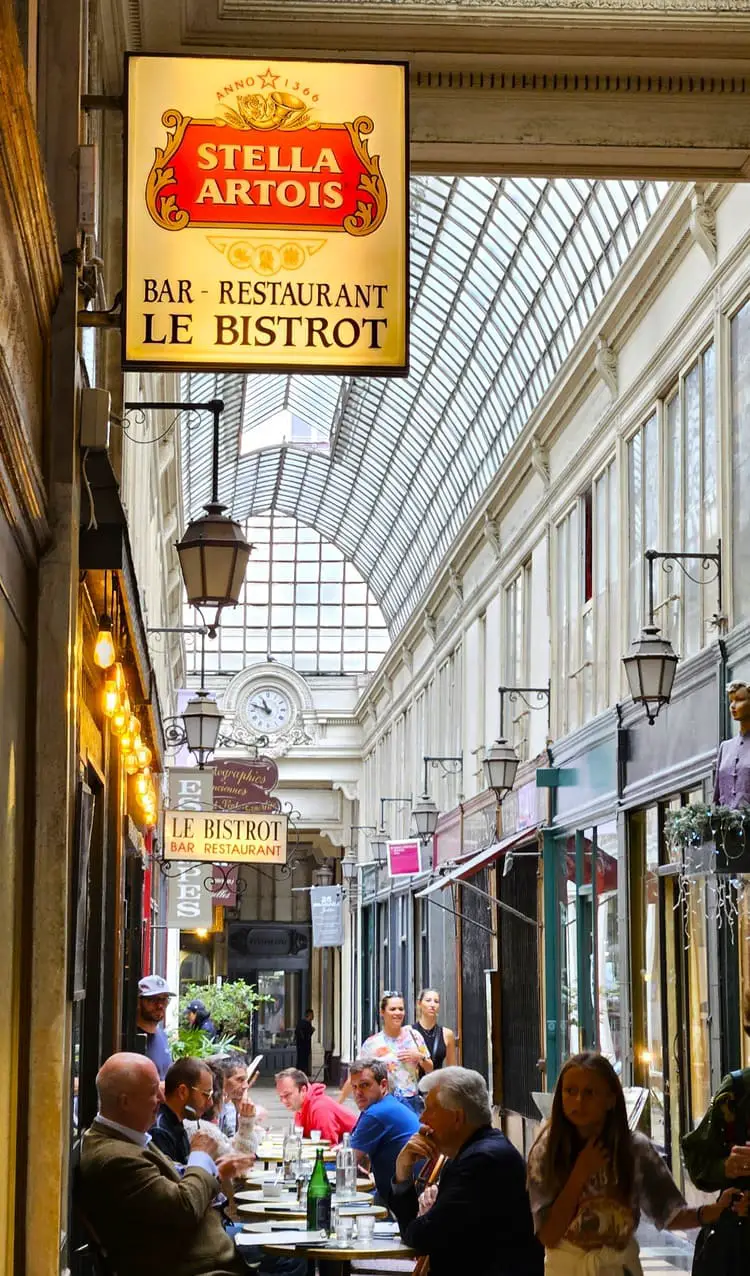
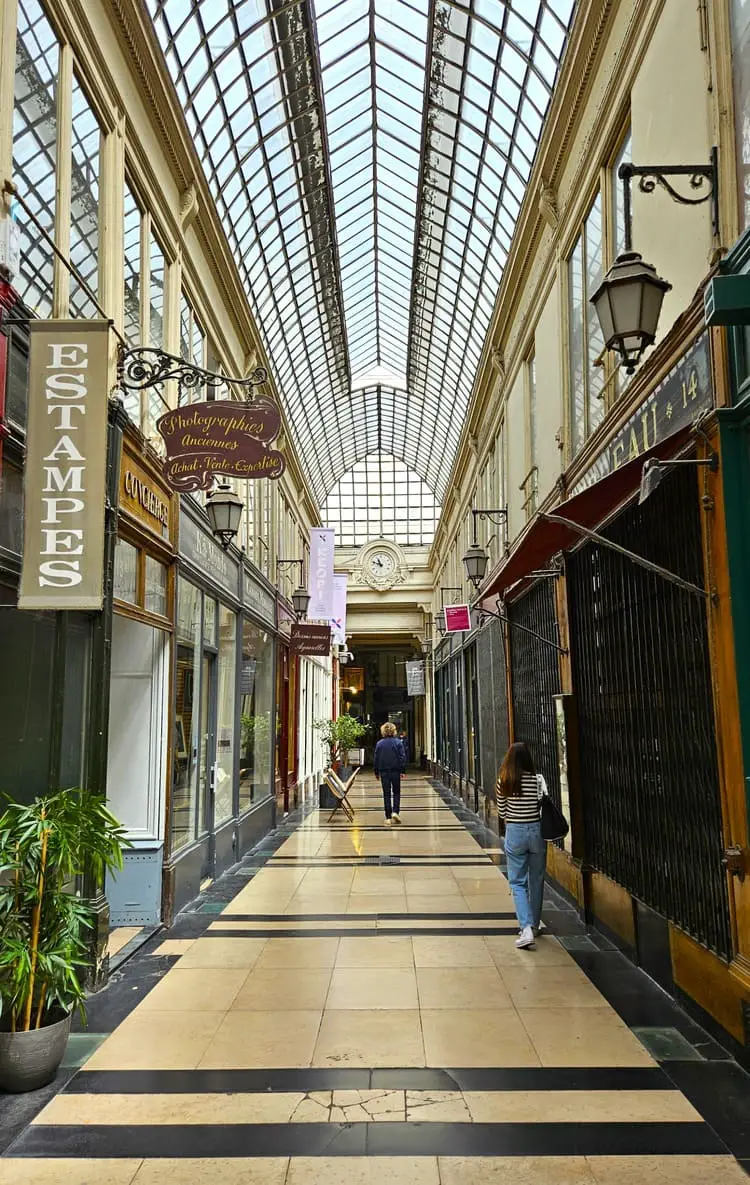
Opened in 1847, Passage Verdeau is one of the most charming covered passages in Paris, known for its bright and airy feel thanks to its large glass roof. It is a continuation of the nearby Passage Jouffroy and shares the same elegant 19th-century style with intricate ironwork and polished floors.
This passage is a treasure trove for vintage lovers and collectors. Inside, you’ll find antique shops, rare book dealers, art galleries, and specialty stores selling old postcards and photographs. There are also unique boutiques offering quirky finds and traditional crafts.
Passage Verdeau has a peaceful atmosphere, making it a perfect spot for a quiet stroll while discovering a more offbeat side of Paris. Its timeless beauty and selection of hidden gems make it a favorite among locals and visitors alike!
Entrance: 6 Rue de la Grange-Batelière, 75009 Paris or 31bis Rue du Faubourg Montmartre, 75009 Paris.
Opening hours: Monday to Saturday from 7:30 AM to 9:00 PM
7) Passage du Grand-Cerf





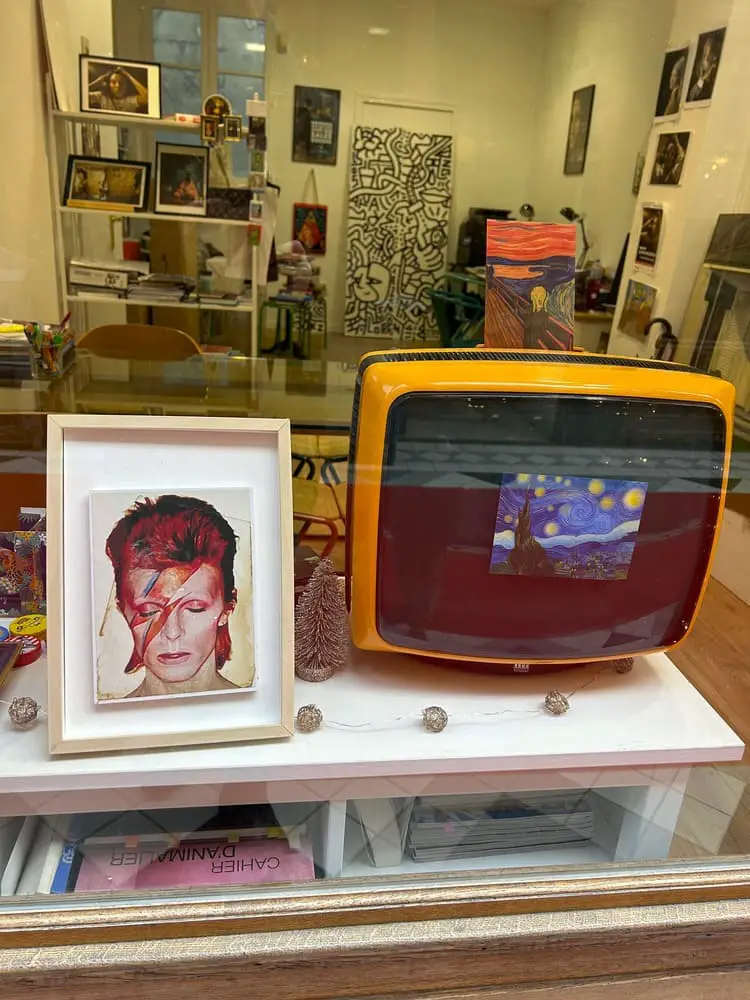
Opened in 1825, the Passage du Grand-Cerf is the tallest covered passage in Paris, with a 40-foot-tall glass roof that fills the space with natural light. Its elegant iron and wood design make it one of the most striking passages in the city.
After being abandoned for years, it was bought in 1985 and beautifully restored. Once a forgotten gem, it is now a bustling spot filled with life and creativity.
The passage is home to unique jewelry and designer shops, highly specialized haberdashery stores, and artisan workshops where you can see craftspeople at work. It’s a favorite for those seeking handmade goods, quirky treasures, and a glimpse into Paris’s artistic side.
Its stunning architecture and vibrant atmosphere make it a perfect stop for visitors looking to explore Paris’s lesser-known treasures.
Entrance: 145 rue Saint-Denis, 75002, Paris
Opening hours: Monday to Saturday, 8:30 am to 7:45 pm

With a passion for travel and having visited over 50 countries, Dorian is eager to share his favorite spots and expert tips to help you explore Paris and France like a local.

